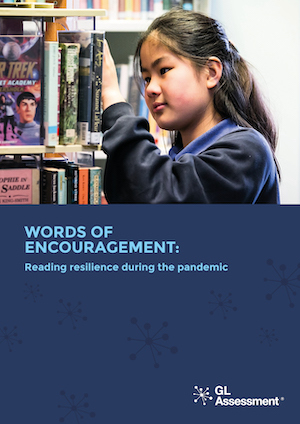Words of Encouragement
It has been without doubt a turbulent time for all of us. Covid restrictions meant that ‘normal’ life ceased to exist and the world of education underwent the biggest single change to how children are taught, overnight. But what has been the real impact on the key skill - reading? What does the data tell us, how have students fared and how are schools preparing for future?
Explore this website to see how schools, Trusts and locality projects approached reading during lockdown, what they’ve learnt on the return to school, and how they are developing their reading initiatives over the months and years ahead.
Explore report
Foreword
Geoff Barton, ASCL General Secretary, former headteacher and English teacher
Introduction
Analysis of NGRT scores after lockdown
On the same page
A whole town approach to reading
Plot twist
The Trust where every character plays a leading role
Supporting cast
How one Trust helped disadvantaged students through lockdown
Text messaging
Enlisting the whole school to boost literacy
Top tips for reading post lockdown
- Ethos and routine are crucial. Re-introduce students to their reading routine as quickly as possible and make sure they start with a book they’ll enjoy
- Support students who have struggled during lockdown. Particularly those who have struggled in terms of engagement and meaningful interventions with their teachers via the screen.
- Set aside more dedicated time in school for reading. . Consider changing the timetable to put in place reading time each day.
- Emphasise that literacy is a whole school endeavour. SMT buy-in is essential and it’s not the responsibility of any one department.
- Words matter. Vocabulary lends itself well as component of literacy strategies because every subject has its own key words. Raise awareness of the impact of poor vocabulary on students’ ability to engage with text.
- Conduct a reading review across all subjects. See how much reading takes place in lessons – text can often be edited into bite-sized chunks, or videos are used instead.
- Invest in quality training. The Education Endowment Foundation offers a range of courses and they can help get buy-in from staff, too.
- Data is crucial. NGRT enables you to baseline, be more strategic about how to target interventions, and it will also show the progress that has been made.
- Share reading data across all departments. If the text a teacher is using is pitched at age 16, they’ll know they will have to put in extra support if their class reading age is 11.
- Keep the profile of reading high. It must remain a consistent focus for long-term impact.





